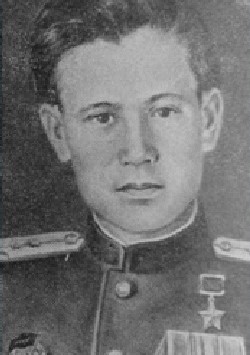Мемориал Победа 79 // List of the stations // RP79YT
RP79YT
Geroy Sovetskogo Soyuza Tvarkovskiy Yuriy Vladimirovich
Omskaya oblast
QSL via R9MK
Photos and historical info.
Attention! Information below is provided by special event station operator and published AS IS.

|
Yuri Vladimirovich Tvarkovsky was born in 1921 in a family of railway employees of the Obluchie station of the Khabarovsk Territory. Childhood was difficult, the mother raised four children alone. Helping her with the housework, Yuri studied at the same time. From an early age, he dreamed of becoming a locomotive engineer, but this dream was not destined to come true. In 1939, the family moved to Omsk, and the following year Yuri became a cadet of the Omsk Military Infantry School named after M. V. Frunze. Due to the beginning of the Great Patriotic War, the release of a new detachment of Frunzentsev lieutenants took place ahead of schedule. Yuri Tvarkovsky was appointed platoon commander of one of the rifle regiments that fought on the Western Front. In the battle of Rzhev (this was his first battle) in December 1941, he already commanded a company, was wounded. The first government award appeared on his chest — the medal "For Bravery". Then there were new battles on other fronts. In them, the communist Tvarkovsky matured and hardened, his commanding skills grew. In March of the forty-third year, a postcard came to Omsk: "Hello, relatives! Frontline greetings. Healthy, cheerful. Only no one believes me that I have been born since 1921, you will understand why. I have just received the news that I have been awarded the Order of the Red Banner. That's all for now. I kiss you hard. Yuri." After successful military operations in the Orel - Kursk direction, the Guards regiment, in which Yuri Tvarkovsky commanded a rifle battalion, rushed to the Dnieper. In the area of the Verkhlievka station, the Nazis, who pulled up fresh forces, managed to delay the offensive of our troops. The battalion of Captain Tvarkovsky's guards bypassed the enemy and went deep into his rear for ten kilometers through the forests, and then unexpectedly struck from the flank. The road along which the Nazis retreated, Tvarkovsky ordered in advance to mine. Having met the ambush fire, the enemy fled in panic, abandoning vehicles, cannons, mortars, and other military equipment. More than 800 German soldiers and officers were killed in this battle. Having broken through one of the first to the Dnieper, Tvarkovsky's battalion crossed the river on the move and joined the battle on its western bank. The Nazis, who did not expect such rapid actions of the Soviet soldiers, were forced to retreat, but, having gathered their strength, they tried to regain their lost positions. Counterattacks followed one another day and night. In five days there were more than forty of them, and none was successful. Tvarkovsky's battalion not only held out and held the recaptured bridgehead, it put the enemy to flight, thereby ensuring the crossing of other parts of its compound. Retreating, the Nazis left more than 700 corpses on the battlefield, a lot of weapons and equipment. For the feat accomplished during the crossing of the Dnieper, Yu. V. Tvarkovsky was awarded the highest award of the Motherland - by Decree of October 16, 1943, the Presidium of the Supreme Soviet of the USSR awarded him the title Hero of the Soviet Union. The hero did not live to see the victory over nazi Germany. On December 7, 1943, in the battle for the liberation of the village of Nerazh, Zhytomyr region, he died a brave death. He was buried in the village of Annopol, Chernyakhovsky district, Zhytomyr region. In memory of the Siberian hero Yu. V. Tvarkovsky, there is an obelisk in the Ukrainian village. And in Russia, in the city of Omsk, in the Soviet District, there is a street named after him. Having grown up in a wasteland, she is improving and getting prettier every year. Buildings of Omsk State University have grown up at its intersection with Mira Avenue. Near a kindergarten and a medical facility. Refiners, builders, teachers and doctors live in multi-storey well-maintained houses. |